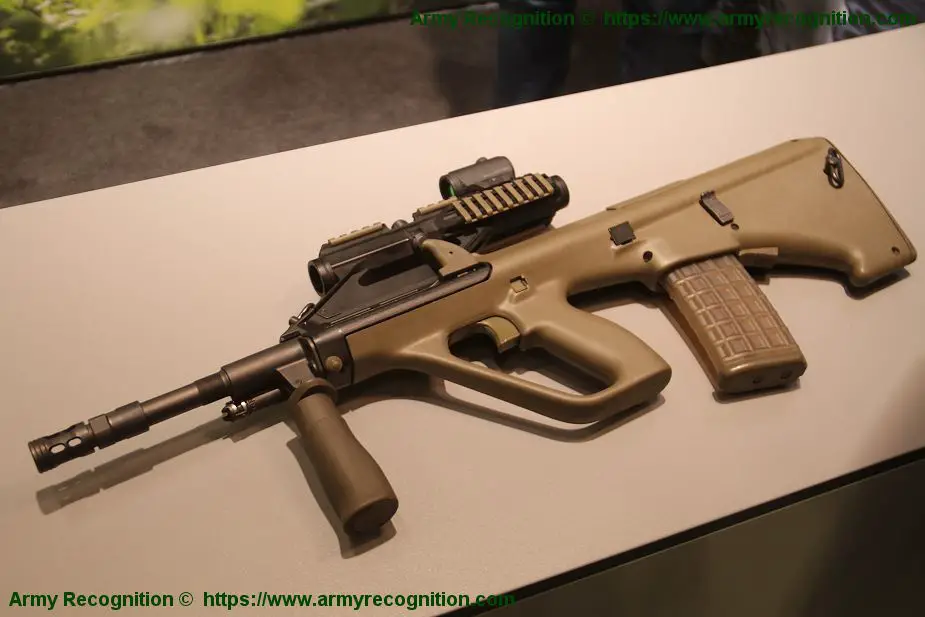The STEYR AUG A3 modular weapon system is a result of the continued development of the world renowned STEYR AUG rifle series by the Austrian firearms manufacturer Steyr. The STEYR AUG A3 design is also based on modular system components, which can be configured from one variant to another quickly and easily, without tools, and at unit level, in order to meet a wide range of future weapon requirements.

Steyr AUG A3 Bullpup assault rifle at Enforce TAC 2019 in Nuremberg, Germany. (Picture source Army Recognition)
The AUG/A3 is the third generation of a bullpup-configured rifle initially developed for the 5.56 NATO cartridge with a 1:9-inch twist. Though the Steyr AUG A3 is built using mostly Austrian pieces, most would agree that the American model is better than its predecessors. Mechanically, the Steyr AUG still utilizes a short-stroke gas-piston system with dual gas-adjustment settings.
The „Bullpup“design maintained its short overall length, without influencing the barrel length, to meet or exceed required accuracy standards. The STEYR AUG A3 features a number of Picatinny rails (Mil. Std. 1913 rails), which allow the quick and easy mounting of various accessories, such as illumination and target acquisition devices, including a variety of optics or night vision devices. The AUG/A3 also features a two-position gas regulator. The first setting is used for normal operation, and the second position is available for unusually fouled conditions.
A bolt release button allows fast reloading of the rifle. Due to its utmost flexibility design concept, the STEYR AUG A3 is a state-of-the-art, multi-purpose assault rifle, for day and night operations. Armed and Special Forces all over the world are trusting in the STEYR AUG.
The new Steyr AUG A3 blends the decades- proven features and classic ergonomics of the original Steyr AUG with functional enhancements and modern manufacturing techniques that weren't available when it was first conceived back in the early '70s.














